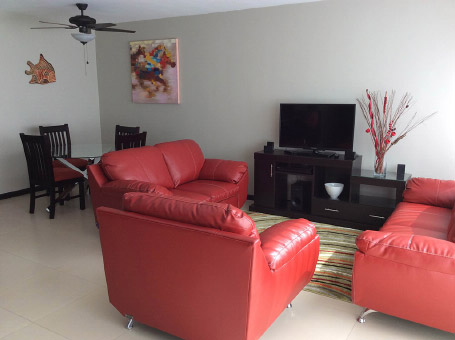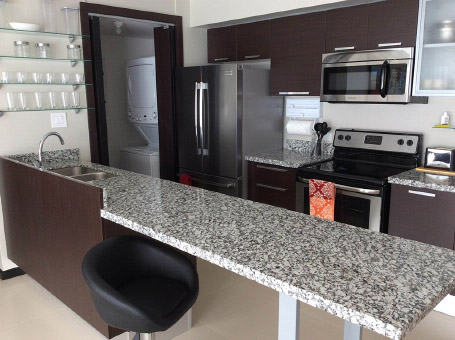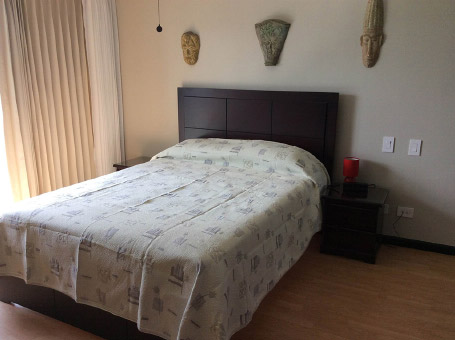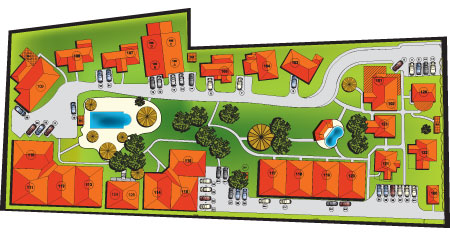It is All About NATE...
ISSUE #679: Oct. 1-7, 2017
2017-10-08
 Brian Timmons Dear friends, When I started Residencias Los Jardines, I started writing a weekly newsletter -determined to tell all the good, bad, and the ugly. I knew some readers would be interested in the construction process. I expected others might be interested in the lifestyle of two people who had decided to live outside the box. For others, the adventures of Lita, the parrot and the cat took on an entertainment saga all its own. Residencias Los Jardines is finished. We periodically have re-sales and rental availability. Some readers may be interested in this information. Brian Timmons |
|
Featured
rentals & sales Paradisus Condos / Rohrmoser 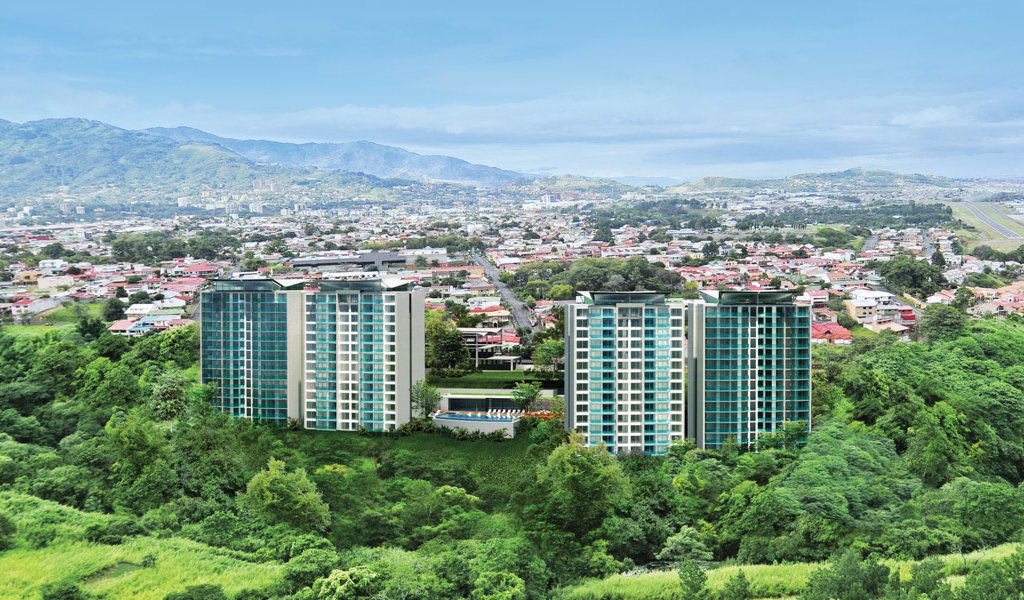
Each of the units consists of two bedrooms / two bathrooms, and a large living/dining/kitchen area. The floor plan of each of these units has eliminated the optional "den / office" divider. The result is a larger area offering more flexible furniture arrangements while still maintaining the option of including an office area. At 105m2 plus two parking spots each and storage locker, they offer a great opportunity for someone seeking views, security, central location, and first class, all round living... PRICE REDUCTION |
|
Market activity
sales & rentals Sales: Los Jardines: Units #106A, #114 and #124 Rentals: Paradisus: Nothing available Los Jardines: Unit #106D is available for rent |
|
Residencias Los Jardines
property management, rentals & re-sales FOR SALE FOR RENT For sale
UNIT #106A Total Area (Sq Ft): 1250 This is a fully furnished 2-bedroom unit situated in a 2-story building, which has two units on the ground floor and two units on the 2nd. floor. Each unit is the same size (1,250sf) divided into 800 sf of interior space and 450 sf of covered front and back terraces. Units 106A and B are on the ground floor; Units 106 C and D are on the 2nd. Floor. The solid masonry demising wall (common wall) as well as the 5" concrete slab prevent sound transference. UNIT #114 Total Area (Sq Ft): 1290 This 2 bedroom/2bathroom,1,290 sf single floor end unit home includes a 150 sf front terrace plus parking for one car. This house is fully air conditioned and has recently been professionally decorated by international decorator Alcides Graffe and has undergone a complete renovation—new modern furniture, finishings, window coverings, and art work by Carlos Gambino. It is arguably the nicest furnished unit at Residencias Los Jardines and only steps from the pool UNIT #124 Total Area (Sq Ft): 662 This 662 sf, + covered parking for one car, is a one bedroom home on the 2nd floor overlooking the large pool. It is ideal for a single person or couple. For rent
UNIT #106D Total Area (Sq Ft): 1227 This 2nd story, 1,227 sf (113 m2 + one parking space) )is a georgous home with one of the best views at Los Jardines. The very large front covered terrace faces west and is suitable for entertaining; the off-bedroom covered terrace faces east for sun sets. This very tastefully furnished and fully equipped home offers a lifestyle envied by many. The owner offers financing if desired. |
|
Our Lives
Weather: Tropical depression NATE dominated our life this past week. Los Jardines survived fairly well and so did most of our friends... all had some problems but minor compared to the many and too the country. Foreclosure: more twists and turns without results. NATE: lots of stories; areas of the country are still seriously affected. At Los Jardines, we had lots of rain but fortunately our new President rehabilitated and / or replaced all our pumps so we were dry. Yes, we found a few new leaks in the roofs of some houses and some wiring shorted out but this is minor. We were without power for 5 hrs one day... our pumps didn't work but we were o.k... I cannot help but wonder why people, who have a choice as to where to live, choose areas frequently isolated from the Central Valley... From my perspective, it is short sighted and foolish... it is, in my opinion, better to visit these places... not live there... because you can, at any given time, be isolated for various reasons... weak road infrastructure... being a main reason. Friends living in Jaco which was more or less center of the worst recorded 14" rainfall in 18 hrs... Below is a summary from a friend of NATE's effect -it is colorfully and cleverly written which pretty well sums up the more detailed reports which follow... and it brings a little specific realism to life this past week. In the Central Valley, we did not have any winds... Oh come on now! The sun is starting to peek out, no rain for 12 hours, after a week of water, clouds are burning off, rivers, which last week were little creeks, are now swoshing, crashing, and thundering away the water downstream. Watch out below! Life in the tropics. Our elevator well is flooded and we bought an Italian 2 hp 1.5 inch output diameter pump, $600, and have pumped out some 2 meters out in 2 days! This morning, I will take the pump to the barrio guard shack and pump out the septic tank, 36 inches by 2 meters deep for the 3rd time in 5 days. The leach field is working in reverse and is flooding the tank! All the hood septics are flooded! Our creek is roaring! Incredible! Landslides everywhere! On the coast roads, idiot truckers and cars are trying to cross bridges and flooded roads. Several 18 wheel tractor trailers and cars have been turned over and washed into the creeks - now roaring rivers! Roads, bridges, dams, poles, wires basic infrastructure badly damaged. Roads near rivers are simply gone. A huge bill to pay! Dams are in deep caca mud water! Logs, trees, tires, refrigerators, and carcasses are threatening the spillways and tunnels. As the water moves down stream the coast is really getting it! Cattle, horses, and pigs are trying to climb onto hummocks but then fall off and are washed away. TV showed one young bull trying to get back up the hummock. No way. Another bull reached down to rub noses and then the young guy washed away... bye, bye, adios. Damage to 10s of thousands of houses, fincas, pueblos, and towns is pretty bad! Lots of human tragedy as very hard earned furniture, cloths, appliances, cars, shacks, bodegas, talleres, etc... are flooded with the liquid mud. Plus some 20+ dead and a bunch are still missing... before the crocs get busy! Crocks are swimming up stream, and the Emergency Commission is warning everyone to stay away from the water, no sightseeing or bathing - or get washed away or eaten - or both. Paradise Lost, Temporarily! Many flights cancelled and Guanacaste and many mountain and coastal pueblos are cut off from roads, water and electric. And cable and internet. Apparently the Pacific Ocean is a little stormy and the yachts and fishing boats are being bounced a bit. In Quepos, the news says that several yachts broke their anchor lines in the storm. No further word on where they went! News has pics of native fishing boats up to 40 or so feet washed ashore. Flooding is incredible all over the country. Landslides everywhere - but thankfully not in our condominium slope under my apartment! 23 important roads are closed to landslides or flooding. Including Routas 27 and 32 to Caldera and Limon and the PanAm norte y sur. Sierra de la Muerte is also closed. I guess that the drought in Guanacaste is now officially over, eh! What do ya tink! We hardly ever get mold, but now, all our shoes and belts are covered! So that is our story of the tragedy of this fooking Honduran bastardo Nate which has departed for NOLA after sucking all this storm over us! Where the pumps are feared to fail! I guess this is more proof for the libtards that man made global warming is causing these hurricanes and storms. Yup. This is more proof. Right in our elevator well! Saludos! |
|
News Items of the Week
Comments Lots and lots of articles but they are mostly the same. The headlines tell the same story minus the details... yes, it has been wet... some new condos in Santa Ana built near a creek... River Walk, got flooded on the ground floor.
And while we got hit with bad weather, one answer to the question as to why one would choose to live here is provided in the following article. While I don't buy into all of it nor necessarily into the narrative....my answer is simply a better quality of life...but each has to define what they are looking for....
|
|
FOR RENTAL OR SALES INFORMATION Brian C. Timmons Costa Rica: Canada: Web: https://www.residenciaslosjardines.com |
Previous reports
2024
2023
2022
2021
2020
2019
2018
2017
2016
2015
2014
2013
2012
2011
2010
2009
2008
2007
